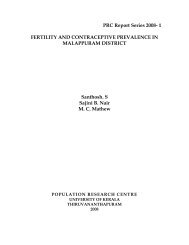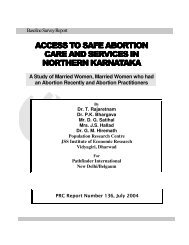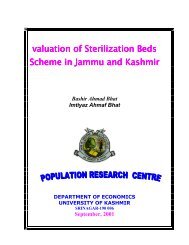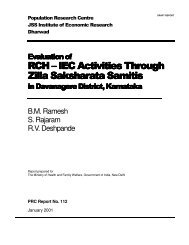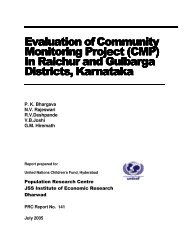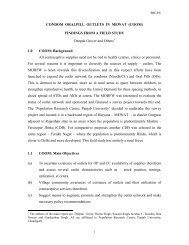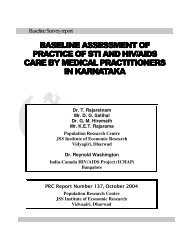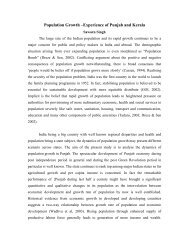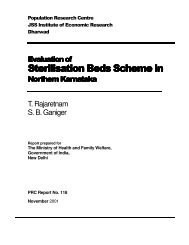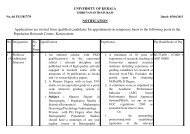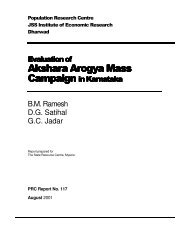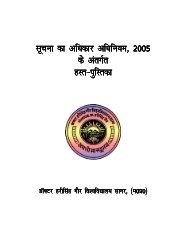Bellary District, - PRC
Bellary District, - PRC
Bellary District, - PRC
- No tags were found...
Create successful ePaper yourself
Turn your PDF publications into a flip-book with our unique Google optimized e-Paper software.
Lit eracy and educat ional at t ainment among persons age 7+10070Literacy and educational attainment60Less than half (43 per cent) of the population age 7 years4550and above are literate, and about two-thirds (69 per cent) of40females in this age range are illiterate. Even among the30males, only 55 per cent are literate. The proportion literate211 71 6201 3in urban areas is higher than the literacy rate in rural areas1 1710(56 per cent versus 38 per cent). Scheduled caste and0scheduled tribe persons are more likely to be illiterate (71Illit erate Middle Middle High school+incomplet e completeper cent) than the others (46 per cent). While 63 per cent ofpersons living in pucca houses are literate, 80 per cent ofMale Femalethose living in kachha houses do not know how to read andwrite. Literacy rate is also higher among Muslims (53 per cent) than Hindus (41 per cent); thedifferences being largely due to higher female literacy rate among Muslims than Hindus (46 per centversus 28 per cent).A higher percentage of males than females have completed each level of schooling. For instance, whilenearly 1 in 6 males have completed secondary level of education, this proportion is only 1 in 14 forfemales. Among those who are literate, the median number of years of schooling is 6.8 years: 7.0 yearsfor males and 6.4 years for females.CHILDREN – HEALTH, EDUCATION, AND WORKBirth registrationOnly 15 per cent of children below age 5 years have been registered in <strong>Bellary</strong> district: 37 per cent inurban areas and 7 per cent in rural areas. The percentage of registered birth is much higher in the state(51 per cent) than the district (MICS 2000). Births of Muslim children (46 per cent), children who do notbelong either to scheduled castes or scheduled tribes (23 per cent), children living in pucca houses (34per cent), and children of households having all literate member (54 per cent) are more likely to havebeen registered than the births of other children. Lack of knowledge that births should be registered isthe main reason reported for not registering.Birth weightOnly 17 per cent of children below age 5 years have been weighed at birth, compared with 40 per cent inthe state as a whole (MICS 2000). This proportion in urban areas of the district is almost three timeshigher than that in rural areas (33 per cent versus 11 per cent). However, for less than 1 per cent ofchildren, information on birth weight could be recorded from the card. For 10 per cent of children whowere weighed at birth, information on birth weight98Indicators of breastfeeding90is not available. Among those who were weighedat birth, 14 per cent are reported to be of low birthweight (less than 2,500 grams at birth), and thisproportion is higher for girls than for boys (18 and11 per cent, respectively).806040200Ever breastfedReceived BF within 1 day of birth32 33Currently breastfedReceived colustrumInfant and child feedingOnly 15 per cent of children below age 2 yearswere put to the breast within one hour of birth, 32per cent within one day of birth, and most mothers(67 per cent) squeezed out the ‘first milk’ before568



